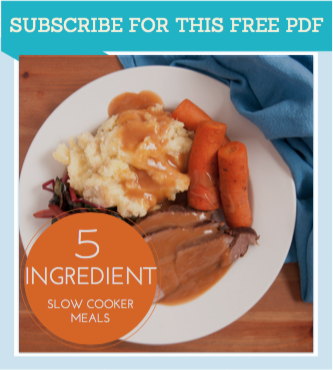Are you a fan of cottage cheese? Here are a few creative and delicious ways to enjoy cottage cheese each and every day!

Cottage cheese is a versatile and nutritious food that often finds its way into breakfast bowls or as a healthy snack option. Lately I’ve been a fan of just eating a big bowl with nothing but a spoon to enjoy. I know, I know. You either LOVE or HATE cottage cheese. Clearly, I’m on team love. If you’re here for it too, then read on to find tasty ways to incorporate cottage cheese into your diet!

Why I’m Eating More Cottage Cheese
- High Protein Content: Cottage cheese is rich in protein, which is essential for building and repairing tissues, maintaining muscle mass, and supporting overall health. A 1-cup (226g) serving of cottage cheese typically provides around 25 grams of protein, making it a substantial source of this important nutrient.
- Good Source of Calcium: Cottage cheese is also a significant source of calcium, which is essential for strong bones and teeth, muscle function, nerve transmission, and overall bone health. Adequate calcium intake can help prevent osteoporosis and other bone-related conditions.
- Low in Calories: Cottage cheese is relatively low in calories compared to other cheese varieties, making it a suitable option for those looking to manage their calorie intake while still obtaining essential nutrients. Choosing low-fat or non-fat varieties can further reduce calorie content.
- Rich in Essential Nutrients: In addition to protein and calcium, cottage cheese contains other essential nutrients such as phosphorus, selenium, vitamin B12, and riboflavin (vitamin B2). These nutrients play various roles in maintaining overall health and supporting bodily functions.
- Versatility: Cottage cheese is incredibly versatile and can be incorporated into a wide range of dishes, from savory to sweet. It can be enjoyed as a standalone snack, added to salads, smoothies, pancakes, and baked goods, or used as a base for dips and spreads.
- Gut Health Benefits: Cottage cheese contains probiotics, which are beneficial bacteria that support gut health and digestion. Consuming foods rich in probiotics can help maintain a healthy balance of gut bacteria and promote digestive regularity.
- Satiety and Weight Management: The combination of protein, calcium, and other nutrients in cottage cheese can help promote feelings of fullness and satiety, making it a satisfying and filling option for meals and snacks. Including cottage cheese in your diet may help support weight management goals by reducing overall calorie intake and preventing excessive snacking.

How to Add More Cottage Cheese to Your Diet
- Smoothies: Blend cottage cheese into your favorite smoothie for a creamy texture and added protein boost. It pairs well with fruits like berries, bananas, and mangoes.
- Salads: Add a scoop of cottage cheese to your salads for extra protein and creaminess. It works well in both green salads and fruit salads.
- Oatmeal: Stir cottage cheese into your morning oatmeal for a protein-packed breakfast. It adds creaminess and a slight tanginess to your oats.
- Pancakes or Waffles: Incorporate cottage cheese into pancake or waffle batter for added protein and moisture. It helps create fluffy and satisfying breakfast treats.
- Toast Topping: Spread cottage cheese on whole grain toast and top it with sliced avocado, tomatoes, or smoked salmon for a nutritious and filling snack or meal.
- Stuffed Vegetables: Use cottage cheese as a filling for stuffed vegetables like bell peppers, zucchinis, or mushrooms. Mix it with herbs, spices, and vegetables for a delicious and protein-rich filling.
- Dips and Spreads: Blend cottage cheese with herbs, garlic, lemon juice, and spices to make a creamy dip or spread for crackers, veggies, or whole grain bread.
- Pasta Sauce: Mix cottage cheese into pasta sauce for a creamy and protein-rich alternative to traditional tomato sauce. It works well in both red and white sauces.
- Parfaits: Layer cottage cheese with Greek yogurt, granola, and fresh fruit to create a nutritious and satisfying parfait for breakfast or snack time.
- Baked Goods: Use cottage cheese in baked goods like muffins, quick breads, and cheesecakes to add moisture, protein, and richness to your recipes.
Dipping into Cottage Cheese
Dipping into cottage cheese can be a delicious and nutritious snack or meal component. Here are some options for dippers to accompany cottage cheese:
- Whole Grain Crackers: Opt for whole grain crackers for added fiber and nutrients. Choose varieties with minimal added sugars and sodium.
- Sliced Vegetables: Carrot sticks, cucumber slices, bell pepper strips, and cherry tomatoes make crunchy and refreshing dippers for cottage cheese.
- Pita Bread: Toasted whole wheat pita bread cut into triangles or strips can be a tasty option for scooping up cottage cheese.
- Rice Cakes: Lightly salted or multigrain rice cakes provide a crispy base for spreading cottage cheese.
- Apple Slices: Crisp apple slices, such as Granny Smith or Honeycrisp, offer a sweet and crunchy contrast to the creamy texture of cottage cheese.
- Celery Sticks: Celery sticks are low in calories and pair well with the mild flavor of cottage cheese.
- Pretzel Thins: Opt for whole grain or multigrain pretzel thins for a crunchy and savory dipping option.
- Whole Grain Bread: Toasted whole grain bread cut into small squares or strips can serve as a hearty dipper for cottage cheese.
- Rice Crackers: Brown rice crackers or multigrain rice crackers offer a gluten-free option for dipping into cottage cheese.
- Crispy Chickpeas: Roasted chickpeas seasoned with herbs and spices provide a crunchy and protein-packed dipper for cottage cheese.
By incorporating cottage cheese into a variety of meals and snacks, you can easily increase your intake of this nutritious and versatile ingredient. Feel free to experiment with different recipes and flavor combinations to find what you enjoy most!







Leave a Reply